The spotlight at WWDC 2014 was focused on two things – OS X Yosemite and iOS 8. While the number 8 represents a major release for iOS, the usability and interface hasn’t been changed radically but instead has been refined subtlety to give more room for extra features. If we can sum up the latest changes, the new iOS with its Mac OS X now offers better sharing and continuity no matter what Apple device you are on.
In addition, the new SDK opens up new possibilities for developers particularly in health, Touch ID and gaming. There was even a new programming language introduced called Swift which promises faster performance with less code. The new AppStore on iOS 8 now offers app bundles where users can purchase a collection of apps at a discounted price, which is good news for both users and developers. Read on as we highlight a couple of new iOS 8 features that were announced at WWDC.
Interactive Notification
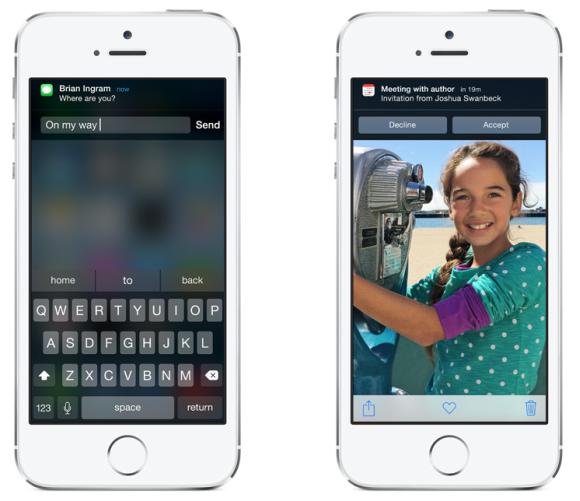
The notification centre was introduced a little later on iOS to display alerts more discreetly like Android. With the new iOS 8, it now gets interactive notifications where you can respond to a message or alerts immediately on the spot. As a result, you can get things done quicker than before as you don’t need to open each individual app. The execution is not entirely new and they are closing up the gap with the rest of the mobile platforms.
Cloud Storage & Continuity
iCloud Drive
Probably this is the biggest change for iOS which goes in tandem with the latest OS X Yosemite. Apple’s iCloud has now become iCloud Drive which offers full storage functionality where you can upload and manage any files you have. It also has deeper integration with mail where you can send large attachments over iCloud Drive and this is similar to Google Drive + Gmail combination.
Despite having extended features, the storage cost of iCloud Drive has come down significantly. The first 5GB on iCloud free and Apple charges 20GB for US$0.99/month and 200GB for $3.99 per month. Currently Apple is charging $20/year for extra 15GB, $40/year for 25GB and $100/year for 55GB. As comparison, its rival Google Drive costs $1.99/month for 100GB and $9.99/month per TB.
Continuity
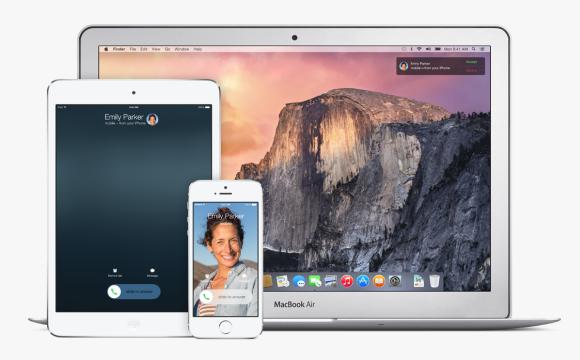
What’s the use of having a family of Apple products if they are not talking to each other? With the latest iOS 8 and OS X Yosemite, switching from one device to another even seamless than before. You could be working on a document, replying a message or email or surfing the web on Safari. The moment you switch to a new device, there will be a prompt that you had a previous session somewhere else and you can tap to continue from where you had left.
This is not just limited to iPad and Mac but also with your iPhone as well. If your iPhone is close by, you can use your Mac to make and receive calls and SMS as well. When your Mac loses WiFi connection, it can automatically trigger the iPhone to create a hotspot in the background for seamless connectivity. Just make sure you have sufficient data quota with your mobile plan.
Family Sharing
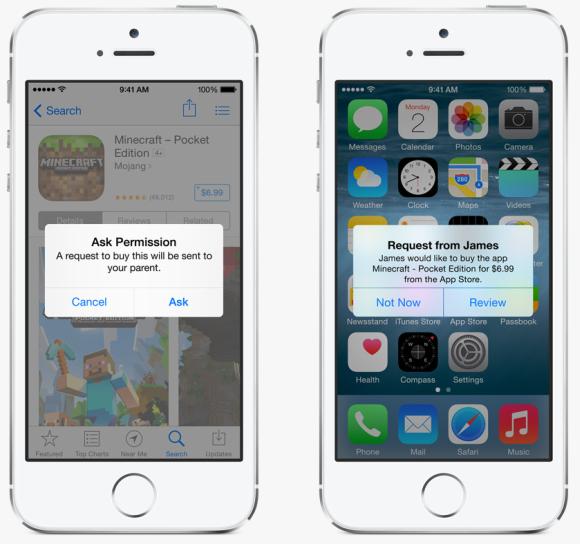
If you own several iOS devices in your household, the family sharing feature is a perfect way to consolidate your contents and apps. Instead of sharing the same account across different devices, you can choose up to 6 accounts in a family where you can share music, movies, TV shows and even apps. As a parent, you can let your kids purchase from the same credit card and still have control on their expenditure. You can set your kids account to seek for approval each time they try to make a purchase.
Apart from apps, the Family Sharing centre also lets you track love ones with location sharing which can be switched off if you plan to stay below the radar. If someone loses their device, any family member help to track it as well.
Better Keyboard
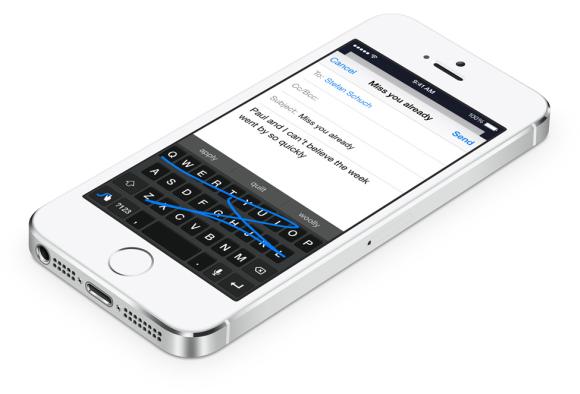
While the rest of the mobile platform has moved on to smarter keyboards such as Swype and SwiftKey, the new iOS 8 has finally accepted just that. They have introduced a new keyboard called QuickType which learns from you and automatically predicts what your next word be like SwiftKey. Also for the very first time, Apple has finally open up iOS to 3rd party keyboards and you can expect Swype to be available on the iPhone very soon.
Messaging
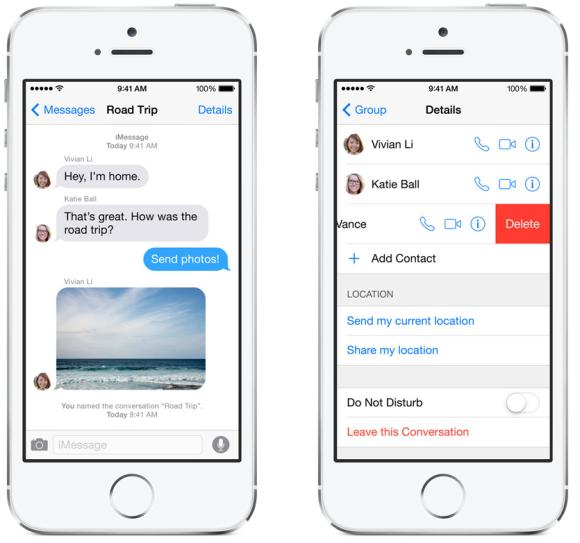
Messaging has given a big revamp as well and it looks a lot like WhatsApp right now. If you can’t type, you can send audio messages via Tap to Talk or simply send a video message. To make it seamless, the audio can be played back automatically when you put the iPhone towards your ear. It also gets full group chat functionality with customised thread names and the option to mute alerts with its DND mode. If your group is heading for an event, group members can share locations temporarily as well.
Enhanced Siri, Mail, Photos & Safari
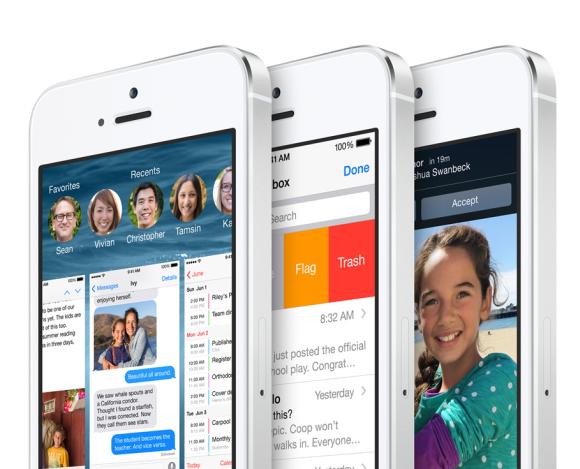
The existing features have been tweaked for greater usability too. Siri for example is now enhanced with touch-less operations where you can simply call out “Hey, Siri” similar to “OK, Google” on Android. It now recognises 22 new languages and the support for music recognition with Shazam. If you work a lot with Mail, the new app has been improved with greater multi-tasking in mind. You can now minimise a mail while you search or work on a different mail. This makes cross referencing within Mail so much easier than before.
Photos now has an improved photo editor which lets you enhance brightness and saturation quickly while Safari gets revamped with better Tabs view and a built-in Spotlight search which draw results from multiple sources.
Health & Others
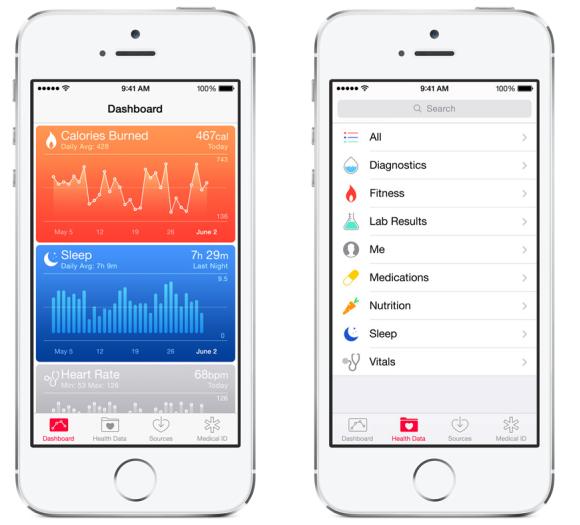
While Apple didn’t introduced any new health devices, the new iOS 8 offers HealthKit for developers. Currently there are countless of health apps and accessories for iOS devices but the data collected are stored in silos. With the new HealthKit, Apple aims to consolidate crucial health info such as your dietary, heart rate, blood pressure and fitness records. This allows easy accessibility by different apps which can be easily shared across with your doctor and participating health partners.
Conclusion
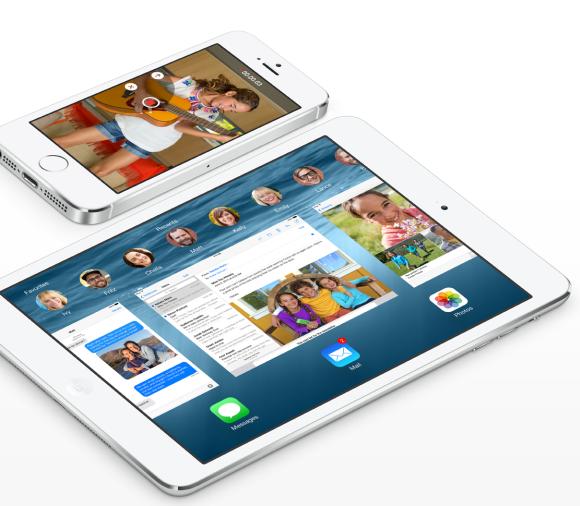
Overall the iOS 8 and latest Mac OS X offer a seamless experience when worked together across Apple devices. While some features like Family Sharing are pretty new, the rest are merely playing catch up like the interactive notifications, group messaging, iCloud Drive and an open Keyboard system. Nevertheless, it is a good step forward but we expected more.
Probably the biggest thing to look forward to is the upcoming apps which would take advantage of its new Swift programming language and new developer kits including HealthKit and TouchID. Developers are promised better performance and open accessibility to features/extensions with iOS 8. After all, apps are the driving force for iOS and it will be interesting to see what these new apps could do with their upcoming iPhone and iPads due end of this year. You can check out all of the iOS 8 features here.
iOS 8 is available for public in fall which is sometime in September. It will be compatible starting with the iPhone 4S or iPad 2 and above. So this means the iPhone 4 is officially stuck with iOS 7, which is quite watered down in terms of features right now. As an iOS user, what do you think of the new features? If you’re using other platforms, are these features enticing enough to make the move to iOS? Leave your thoughts in the comments.







